While digging into this topic, we didn’t set out to bury search engine optimization (SEO) for blogs—or to crown it king. But we did uncover what actually matters now and how to use it without worshiping it.
Still, lots of brands and solo publishers either avoid SEO, misuse it, or ignore it until traffic flatlines.
Below, you’ll find practical, up-to-date SEO tips for blogs you can apply immediately—no fluff, just what moves the needle.
Buckle up and tell your neighbors au revoir—we’re headed to SEO-land, and you’re in the cockpit.
What Is SEO and Should We Care?
Why does every digital marketing guru act like SEO is more consequential than pickled gherkins? And why sweat page-one rankings instead of settling for page nine?
First, SEO matters for reasons that have nothing to do with brine.
SEO helps people find your content when they’re trying to solve a problem, compare products, or get a quick answer—whatever matches the intent of your post and audience.
Put simply, SEO improves your blog’s discoverability. Better discovery drives qualified traffic, grows leads, and—when your content is genuinely useful—turns readers into customers. In theory.
In practice, it’s messier. Algorithms change, competitors adapt, and intent shifts.
Either way, SEO is the foundation your blog stands on. If you want long-term relevance and competitive visibility, you need a content strategy grounded in SEO.
Now, why do rankings matter?
Because they’re the gatekeeper.
Your average position in search correlates strongly with clicks. Higher rankings mean more people land on your posts. More qualified eyeballs, more results.
31 SEO Tips to Get on Page 1
Remember those gherkins?
Pickling works because the balance—pH, salt, timing—keeps food fresh longer.
Think of SEO as your preservation method for content. Do it right and your posts stay relevant longer, compounding value.
Consider this your big jar of proven, actionable tips to keep content from spoiling.
1. Conduct Detailed and Relevant Keyword Research
Blank pages are brutal. Crafting sentences that read well, serve your audience, and map to search demand can feel impossible.
Then you have to string those sentences into paragraphs, and those paragraphs into a post that actually ranks. Fun.
Good research fixes that.
Use keyword tools to reverse-engineer what your audience is searching for and the intent behind it. Aim for terms with real demand that you can credibly satisfy—then build content that fully answers the query.
Some dependable tools:
There are countless ways to research keywords. Pick a stack, test workflows, and standardize a process that fits your niche and resources. Analyze SERP types (snippets, videos, shopping, discussions), intent (informational vs. commercial), and competitor gaps.
Short on time? Semrush’s SEO Assistant Tool can speed up ideation and on-draft suggestions.
It integrates with WordPress and Google Docs and is widely used by writers, content teams, and ecommerce editors to align drafts with search demand while you write.
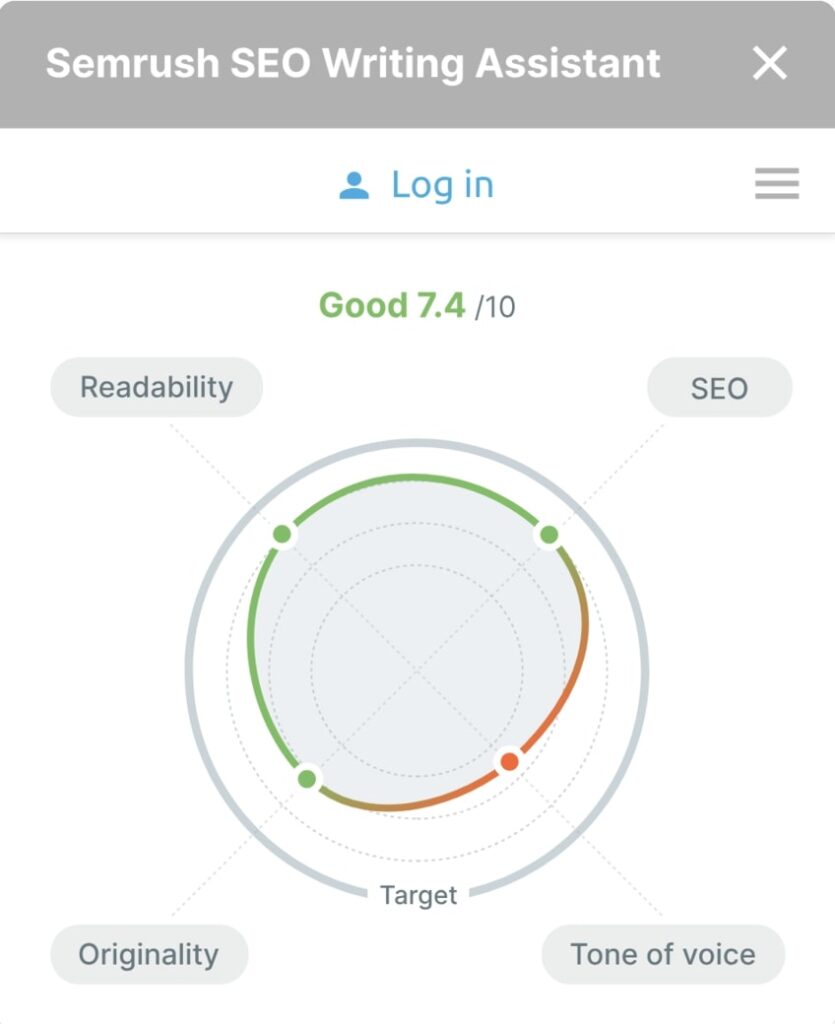
For a step-by-step walkthrough, see our guide to conducting relevant keyword research for SEO.
2. Come Up With a Killer Title
Titles still make or break performance. Search keeps evolving, and your headline needs to match intent, set expectations, and stand out in a crowded SERP.
Yesterday’s formula—stuffing buzzwords and numbers—won’t cut it. Today’s best titles are clear, specific, emotionally resonant, and honest about what’s inside.
Include core terms when natural, but avoid robotic phrasing. Write for humans, then sanity-check for search.
Tools like AIOSEO’s title generator can spark ideas. Use AI as a brainstorming partner—final decisions stay human.
Great titles earn the click, which improves click-through rate (CTR) and sends a strong quality signal—if your content delivers on the promise.
3. Add Multimedia to Your Blog Posts
Images, videos, charts, and GIFs keep readers engaged and help you explain complex concepts faster.
When people enjoy the experience, they stick around. In GA4, that shows up as higher engagement rate, longer average engagement time, and more engaged sessions—signals that correlate with better visibility.
So prioritize engagement.
Use infographics or royalty-free images to break up walls of text. Summarize key steps visually. Add short videos for demos or quick wins. Host heavier video on YouTube or a dedicated provider, then embed to keep page weight down.
Don’t have in-house video chops? Hire help on Fiverr or Upwork. Provide a tight brief so the final cut fits your brand and the post’s intent.
4. Consider Regular Internal Linking
Internal links guide readers to related content and help search engines understand your site structure.
A healthy strategy depends on having strong contextually related posts. Use descriptive anchor text, fix orphan pages, and build topic paths so readers (and bots) can follow a logical journey.
Done right, internal links distribute authority, reinforce topical depth, and improve crawl efficiency.
5. Create Content Hubs
Content hubs (topic clusters) are curated collections around a core theme—posts, tools, videos, anything that builds comprehensive coverage.
Picture concentric circles: start with a definitive pillar on the main topic, then build supporting pages for each subtopic, interlinking everything.
Why hubs help:
- They enable deep, authoritative coverage of a subject.
- They impose structure that humans and crawlers understand.
- They open doors to harder keywords via topical authority and smart internal links.
To build one, choose a core topic, map subtopics, and design a link structure that ties it all together.
Jumpstart ideas by:
- Analyzing audience gaps—where are people still unsatisfied with available answers?
- Researching competitors—what’s ranking, and what angles are missing?
- Polling internal teams—what content would help sales, support, or product?
With a direction in place, sift through topics for the highest-impact, lowest-effort wins first to build momentum.
Tools like Semrush’s Topic Research can surface subtopics, questions, and angles you might miss.
Avoid subjects that demand huge resources before you’ve proven traction. Start where you already have expertise, then expand the hub as you validate demand.
And if you pivot mid-build? No problem. Park the hub, prioritize a faster win, and return when you can do it justice.
6. Cover Related Entities and Search Intent (Not “LSI”)
Once you’ve picked a primary keyword, widen your scope to cover the topic thoroughly—synonyms, related entities (people, brands, tools), and the adjacent questions readers ask.
Choose a primary term with solid volume and winnable competition in your niche. If head terms are too fierce, target specific long-tails that match your strengths and audience pain points.
For example, ranking for “search engine optimization” is tough. But a focused long-tail like “how to rank a new blog with no backlinks” may be attainable if your content is the best answer.
Google doesn’t use an “LSI keywords” system. Instead, aim for natural coverage of related topics and questions. Use SERP features—“People also ask,” related searches, and top-ranking outlines—to ensure you’re addressing real intent.
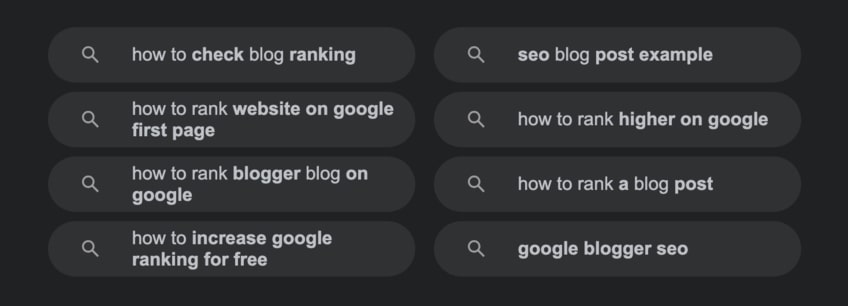
Work these concepts in naturally. Avoid keyword stuffing. If it reads like a bot wrote it, readers (and algorithms) will bounce.
Note: some tools call your primary term a “focus keyword” or “focus keyphrase.” Different label, same job—anchor the topic and satisfy the intent comprehensively.
7. Meta Descriptions Are Your Friends
Meta descriptions are short page summaries in your HTML.
They aren’t a direct ranking factor, and Google often rewrites them. But well-written descriptions can lift CTR—especially when they match the query and the page actually delivers.
Search engines and social networks commonly display them (with variations), so craft them intentionally.
Plugins like AIOSEO and Yoast make editing easy in WordPress.
Keep them concise and compelling. Around 150–160 characters is a safe guardrail, but Google may show more (or less) depending on device and query.
If a description gets truncated, that’s fine—front-load the value, use natural language, and avoid keyword lists.
When it makes sense, place your primary term near the beginning—but never at the expense of clarity or readability.

8. Try To Snatch the Elusive Featured Snippet
Once upon a time, all Google results looked alike.
Now the SERP mixes:
- Standard text results
- Rich results
- Featured snippets
- Image packs
- Video carousels
- Exploration features
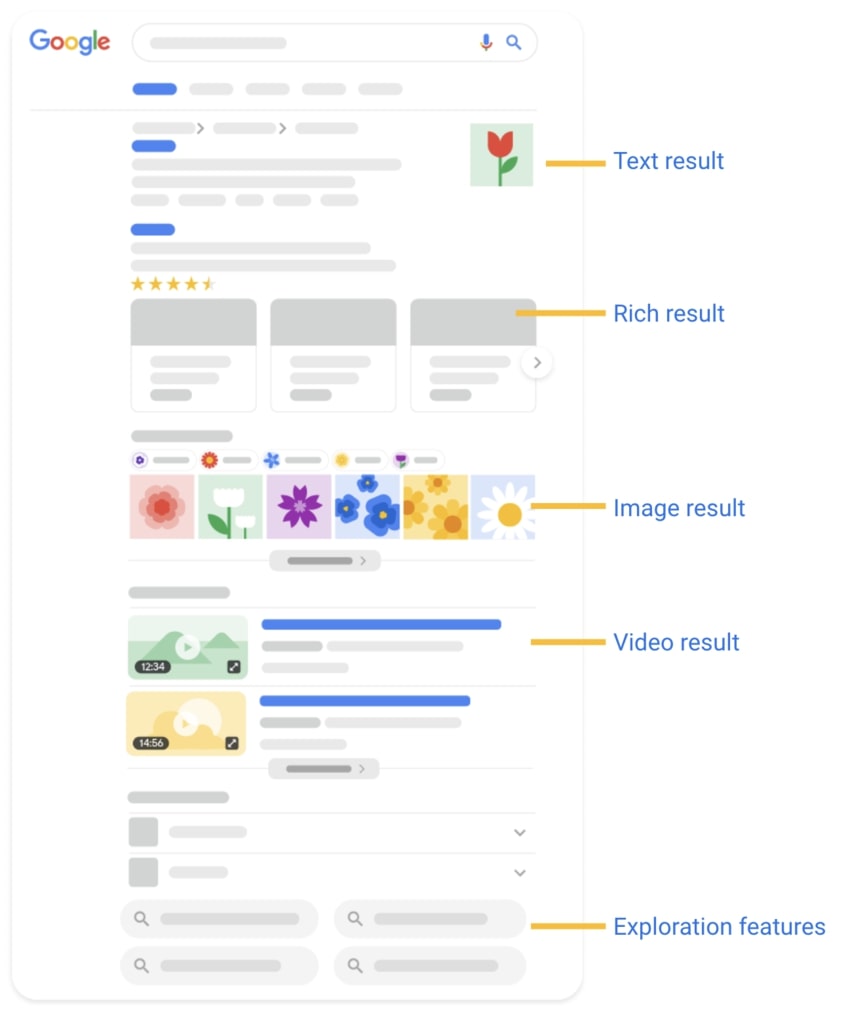
Featured snippets sit above the traditional #1 listing and can capture a big share of clicks.
They take up more real estate and often appear above “People also ask,” pushing other results down the fold—especially on mobile.
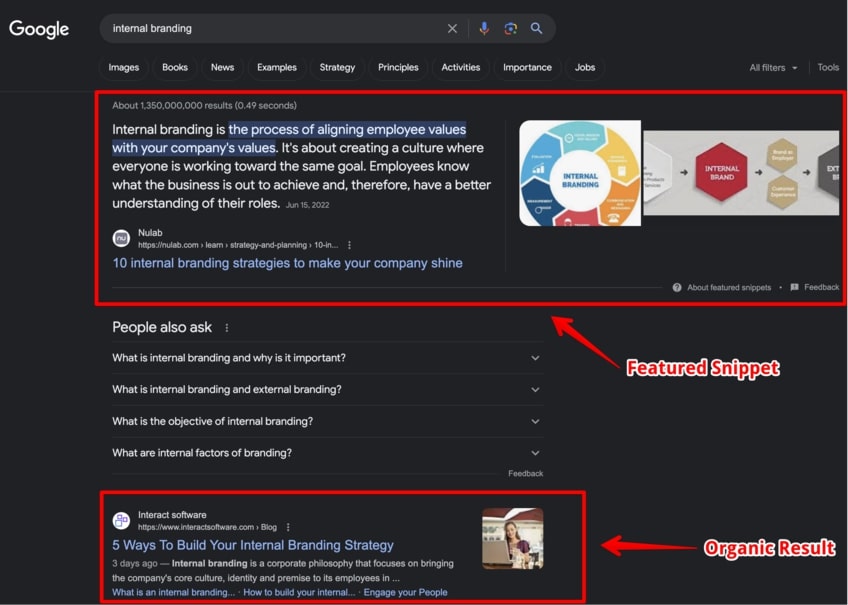
Note: when your page earns the snippet, Google typically deduplicates the regular blue-link listing on page one. Winning the box is still usually worth it for qualified traffic and brand visibility.
Unless you have a specific reason to opt out, aim for snippets by answering the question directly (one-sentence answers, lists, tables), then expanding with depth and examples.
9. Utilize Categories and Tags
Most CMSs let you organize posts with categories and tags. Use them to create a logical structure.
Categories function like your main topics (similar to hub pillars). They shouldn’t sprawl or overlap.
Tags live at the post level. Use them sparingly to clarify context for readers and crawlers—avoid tag bloat that creates thin archives.
10. Look for Guest Posting Opportunities
Guest posts build relationships, brand awareness, and—when earned editorially—authoritative backlinks.
- To earn a relevant backlink
- To promote a product, service, or book
- To spotlight a cause or fundraiser
Done well, guest posting is powerful networking for both new and veteran bloggers.
Find opportunities with simple queries like “write for us” or “guest post” + your niche. You can uncover dozens of solid prospects quickly.
Use advanced operators to narrow results and avoid low-quality targets.
Try queries like:
- seo intitle:”contribute to”
- search engine optimization intitle:”write for us”
- seo inurl:write-for-us
- seo inurl:author/neil-patel
- guest post intitle:resources inurl:”resourses”
Mix operators to find fresh prospects—don’t pitch the same list everyone else scraped. Andrew Huberman can’t be on everyone’s blog.
Beware low-quality sites. Backlinks from sketchy domains can hurt more than help.
Avoid:
- Content farms
- Sites with misaligned ethics or audiences
- Spammy aggregators
- Adult/casino sites (rare edge cases aside)
- Phishing/malware/adware domains
If unsure, use Ahrefs or Semrush to check domain rating, traffic trends, link profile, and outbound link patterns before you pitch.
11. Write Posts That Are Satisfying To Read, Obviously
UX matters. Hard-to-read walls of text and chaotic structure lose readers—and rankings.
Easier said than done.
Improve readability by:
- Using shorter sentences
- Breaking up long paragraphs
- Inserting images/video where helpful
- Leaning on bulleted lists
- Applying clear, consistent headings
At Quick Sprout, we rarely go beyond H3 to keep scanning simple.
Better UX correlates with stronger engagement metrics in GA4. That’s good for readers and good for search.
12. Explain the Topic in Great Detail
If you’re already covering related entities and questions, you’re primed to build depth.
Comprehensive posts win because they actually solve the problem. Thin content loses because it doesn’t.
Explore SERPs, “People also ask,” forums, and support threads to expand your outline with real user questions—then answer them clearly.

13. Spruce Up Older Blog Posts
The golden rule of content management involves babies and socks.
Babies and socks?
Blogs are like babies—they outgrow things fast. What fit last year may not fit today.
Don’t publish once and forget. As information changes, your content must be refreshed to stay accurate and useful.
Practical refresh ideas:
- Re-share on social after meaningful updates (e.g., every 6–12 months)
- Upgrade internal links to newer, better resources
- Add sections that reflect new data, features, or policy changes
- Remove obsolete or misleading info
- Track rankings with a rank tracker to catch declines early
Build a recurring audit cadence to keep your archive current. Consistency compounds.
14. Write a Compelling Hook
In journalism and creative writing, the hook is your opening line or paragraph that grabs attention and doesn’t let go.
Without a hook, readers bounce. Worse, they remember your brand as “skip-worthy.”
To write stronger hooks:
- Start with a title you love—clarity first, then flair
- Drop readers into the action (“You’re probably wondering how we got here…”)
- Open with a surprising statement (“Blogs are dead—just not how you think”)
- Ask a sharp question (“Are pickled gherkins the future of SEO?”)
- Play off a familiar line (“We didn’t mean to kill SEO”)
15. Write an Enticing Call to Action (CTA)
A post without a CTA is a donkey at a crossroads—stuck.
Your CTA nudges readers to the next step in your funnel. It must be relevant to the post and feel like the natural next move.
CTAs can be:
- Buttons
- Widgets
- Hyperlinks
- Images
- Social share prompts
Use them sparingly, place them logically, and keep language consistent. Strong CTAs support strong UX.
16. Optimize Your URLs
URLs are among the first things crawlers see—and humans too.
They communicate:
- Security (HTTPS should be standard)
- Canonical preference (www vs. non-www should resolve consistently)
- Topical clarity (brand or descriptive path: barky.com vs. healthydogfood.com)
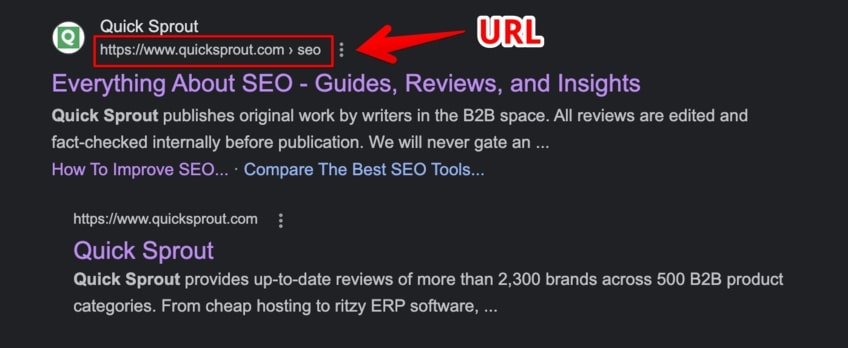
The slug—the tail end of the URL—is a good place for concise, human-readable keywords that reflect the topic.
Keyword-rich URLs aren’t a big ranking lever, but clear, descriptive slugs help users and make links more trustworthy.
Short, clean, predictable. That’s the goal.
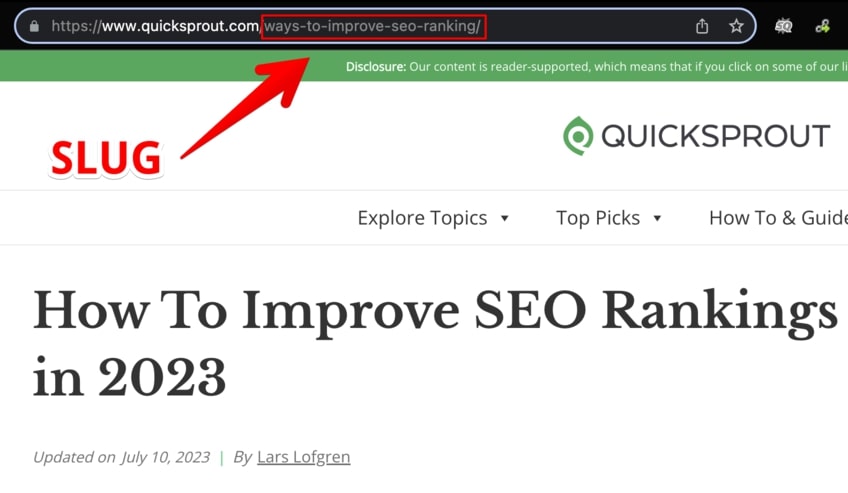
17. Optimize Your Media
Media can make or break performance.
Heavy GIFs, massive images, or self-hosted video can drag load times—and readers won’t wait.
Follow a simple optimization checklist:
- Keep file sizes lean. Use modern formats (WebP/AVIF) and compression to improve speed and scrolling smoothness.
- Standardize dimensions and placement so media complements your theme and doesn’t cause layout shifts.
- Only include media that adds value. Remove decorative weight that slows the page without helping the reader.
Many CMSs compress images automatically; you can also use TinyPNG or similar tools before upload. Enable lazy loading and consider a CDN for global speed.
18. Add Image Alt Text
Under the hood, images live in HTML via the img tag.
Two primary attributes matter:
src(the file path)alt(the alternative text)
Other helpful attributes include:
class(styling)title(tooltip on hover)
Example: <img src=”/image-example.png” alt=”Example alt text for your image”>
Alt text isn’t a direct ranking booster, but it improves accessibility, aids Google Images, and helps users when images fail to load.
If an image is a link, the alt can act like anchor text when the image doesn’t render.
Screen readers also rely on alt text. Make it descriptive and concise so visually impaired visitors get the full context.

For the goodest of boys above, “dog in nature” is vague. “Brown and white border collie playfully gazes around surrounded by nature” gives helpful, accurate context.
19. Write From the Heart
“In chasing the algorithm, we found treasure—and misplaced our voice.”
Guilty as charged.
If you don’t care about the topic, readers can tell. Their attention drops, and so do your engagement metrics.
Writing from the heart generally means:
- Choosing topics you genuinely care about
- Sharing experiences or opinions that elicit emotion
- Offering a fresh angle on familiar advice
- Keeping it light and engaging—without derailing into self-indulgence
20. Watch Out for E-E-A-T
We’ll spare the gherkins joke.
E-E-A-T stands for Experience, Expertise, Authoritativeness, and Trustworthiness—concepts in Google’s Quality Rater Guidelines that reflect what helpful content looks like.
Quality Raters evaluate results to improve systems over time. They reference the Search Quality Rater Guidelines, which are updated regularly.
These aren’t “ranking factors,” but they’re a great checklist for making content people trust.
Experience
Show first-hand use. If you review headphones, reference what you’ve actually tried and how it compares.

Expertise
Demonstrate credentials or deep knowledge when the topic warrants it (recipes from a chef, security advice from a pro). Sometimes the best angle is peer-tested, real-world experience.
Readers want credible sources—whether that’s a professional like Jamie Oliver or a community expert with track record.
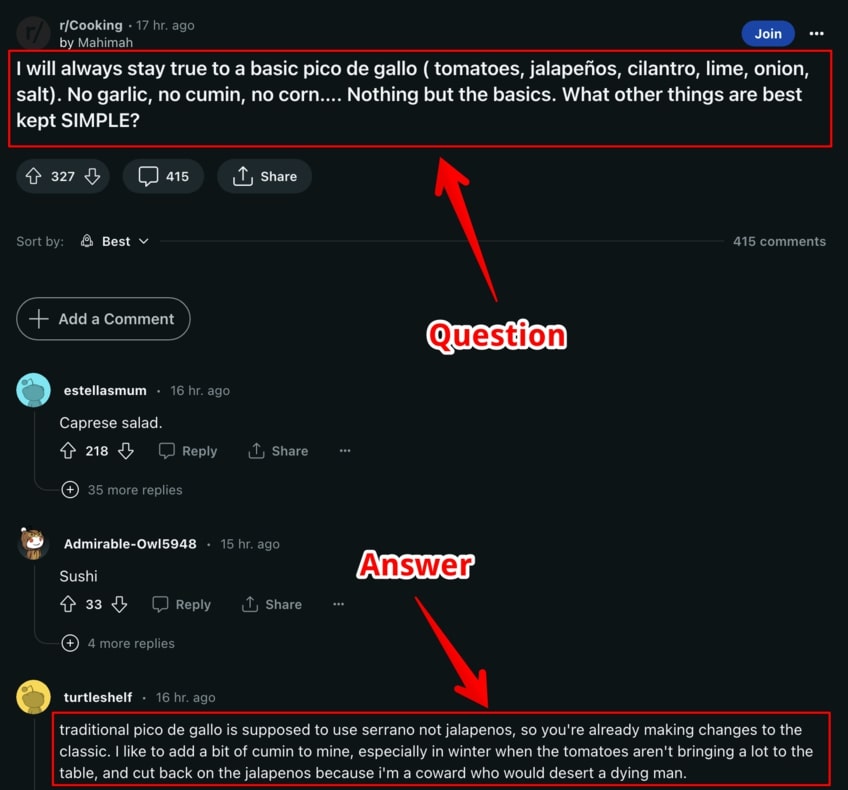
Authoritativeness
Authority accrues when reputable sites cite you, your authors are credible, and your pages are reviewed where appropriate.
- Is the site legitimate and transparent?
- Do authors have recognized expertise?
- Are fact-checkers or editors credited on sensitive topics?
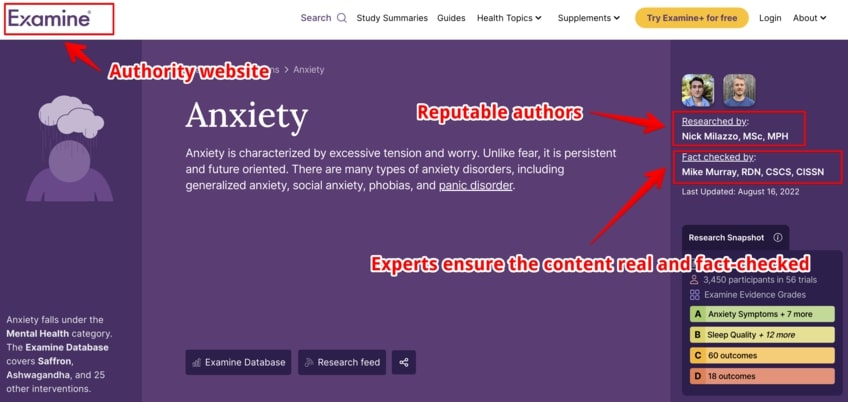
When others in your niche point to you as a reliable source, that’s authority in action.
Trustworthiness
Be transparent about how you make money. Disclose affiliate relationships and comped products. Use HTTPS and protect user data.

The opposite? Shady disclosures or insecure checkout pages. Trust is fragile—earn it and protect it.
21. Consider Responsive Design
Search is mobile-first. If your site isn’t fast and friendly on phones, you’ll fall behind.
Responsive design adapts layout to the device so you don’t need separate mobile URLs.
Besides simplifying your URL structure, it consolidates authority—no splitting link equity across m-dot and desktop variants.
Bottom line: responsive, fast sites are easier to crawl, index, and rank.
22. Optimize for Voice & Conversational Search
“Alexa, what are Moby Dick’s weaknesses?”
If Captain Ahab had Wi-Fi, he’d ask that. Whaling’s banned; the question still slaps.
Voice queries tend to be longer and conversational. Results often pull from featured snippets and top organic answers.
To show up more often:
- Target long-tail questions. Use H2/H3 questions with concise answers directly below.
- Match conversational phrasing—natural language wins.
- Strengthen local SEO—complete your Google Business profile and answer “near me” search intent where relevant.
“Alexa, what’s next?”
23. Create an SEO Persona for Your Blog
Buyer personas are standard in marketing. Apply the same logic to search behavior.
An SEO persona models how your ideal reader searches, where they hang out, and what convinces them.
Ask:
- What patterns show up in their queries?
- How do they search on social or YouTube?
- Do they use Reddit, Quora, Discord, or niche forums?
Surveys can help—be clear about how you’ll use data and protect privacy to earn trust.
24. Use Proper Schema Markup
Schema (structured data) is code that helps search engines understand your page type and key details.
You can mark up things like:
- Reviews and ratings
- Product prices and availability
- Business addresses
- Hours
- Contact info
Users don’t see schema, but it can enhance listings (rich results) and improve eligibility for certain SERP features.
It can also support conversational and voice answers. Validate with Google’s structured data tools.
25. Stay on Top of Your CMS SEO Tools
Whether you use WordPress, Drupal, or a custom build, know your SEO tooling.
It helps both new builders and veterans maintaining large archives.
Quick checks:
- Confirm a valid sitemap (usually
/sitemap.xmloff the root domain). - In WordPress, learn what Gutenberg does by default and how your theme outputs titles and H1s.
- Understand how title and heading tags render on the front end—avoid duplicate H1s.
- Add lightweight CSS carefully—never at the expense of performance.
- Check compatibility with popular SEO plugins before installing.
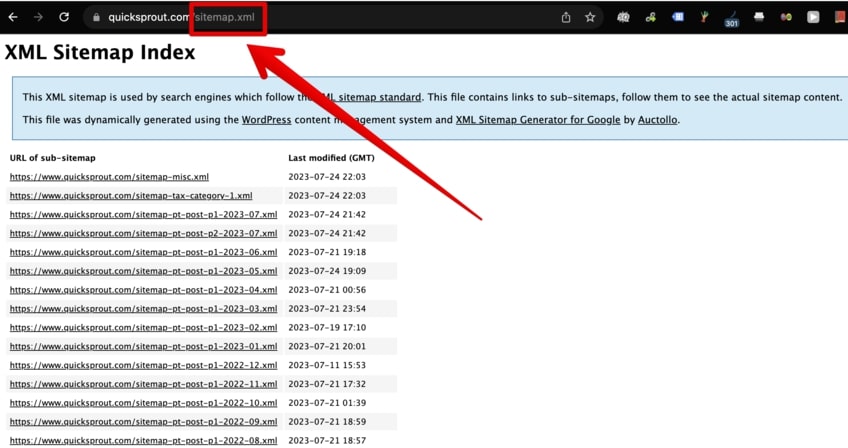
CMSs are powerful and complex. Give yourself time to learn them deeply.
26. Check Your Robots.txt File
robots.txt tells crawlers what they can and can’t fetch. You’ll usually find it at /robots.txt on your root domain.
It lives in your root directory. Even without it, crawlers will still index your site, but larger sites should optimize for crawl budget.
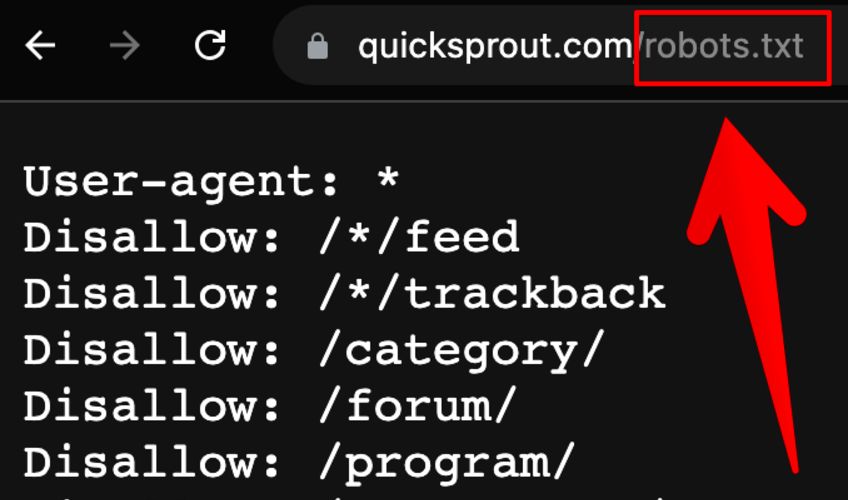
Small sites don’t need to obsess, but massive properties should help crawlers prioritize important URLs.
Crawl budget is how much time/resources Googlebot spends crawling your site. If you have thousands of pages, some may be delayed if you waste budget on low-value URLs.
At minimum: ensure your sitemap is allowed and avoid blocking essential assets (CSS/JS). Typically disallow admin areas and thin archives that don’t serve searchers.
27. Connect Your Blog to Google Analytics
Google Analytics (GA) shows how your content performs. Universal Analytics sunset in 2023; GA4 is the current standard.
If you connected before July 1, 2023, you likely had to migrate to GA4. If not, set up fresh and track from now on. Our GA setup guide walks through it.
GA4 benefits include:
- Improved privacy and security
- Event-based measurement (not just sessions)
- Cleaner UI/UX
- Simplified conversions
- Better ad hoc analysis
To win with content, you need consistent tracking—engaged sessions, average engagement time, conversions. GA4 gives you the data to iterate.
28. Connect Your Blog to Google Search Console (GSC)
GSC monitors site health: indexing, sitemaps, manual actions, mobile usability, and performance by query/page.
It also reveals queries you’re showing up for, CTR, and where to improve titles and snippets.
Set up is straightforward—see our GSC guide for SEO. GSC can also email you when issues arise so you can fix them fast.
29. Improve Your Blog’s Loading Time
We touched on media weight, but site speed deserves its own spotlight.
Google’s Core Web Vitals are the standard: aim for LCP < 2.5s, INP < 200ms, and CLS < 0.1 for a smooth, stable experience.

Fast sites win attention (and conversions). Slow sites bleed both.
Test with PageSpeed Insights, then optimize images, defer non-critical JS, cache aggressively, and use a CDN.
30. Use Simple Language
Clarity is inclusive—and it scales readership.
Readability is often measured with the Flesch–Kincaid scale. Higher scores = easier to read; lower scores = denser prose.

For most blogs, aim for content an eighth-grader can understand—roughly 50–60 on Flesch–Kincaid—without dumbing down your expertise.
Use tools like Grammarly or Semrush SEO Writing Assistant—or a sharp editor—to catch complexity and tighten language.
Simple doesn’t mean bland. Keep your voice; remove the friction.
31. Beware of Negative SEO
As SEO evolves, so do the tactics bad actors use to drag sites down.
Common attacks include comment-spam links, toxic backlinks, duplicate/scraped content, and fake reviews.
Reduce risk by:
- Connecting all properties to GA4 and GSC for visibility
- Disavowing clearly spammy links in GSC’s disavow tool when necessary
- Keeping regular, versioned backups for quick recovery
- Enabling multi-factor authentication on your CMS and key accounts
- Avoiding link schemes (like PBNs) that invite penalties
- Vetting plugins carefully—security flaws in unknown plugins are a common attack vector
Don’t panic—proactive hygiene keeps your risk low and recovery options high.
Conclusion
Running a fast, trustworthy, SEO-optimized blog is challenging and rewarding—like pickling gherkins with a perfect brine.
From demonstrating real E-E-A-T and optimizing for conversational queries to monitoring analytics and guarding against negative SEO, high rankings come from helpful content delivered with speed and clarity.
Ready to test these 31 tactics in the wild and see what sticks?
See you on page one.
